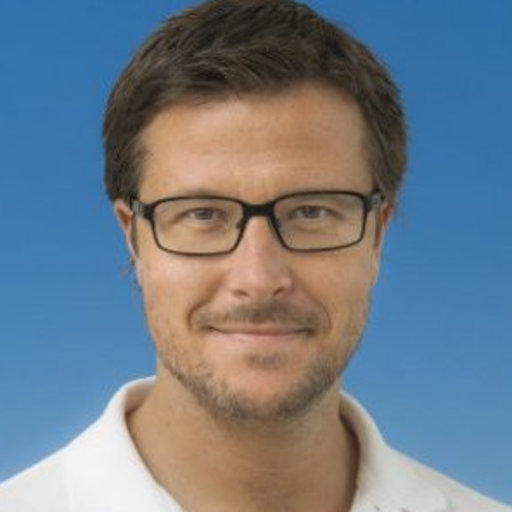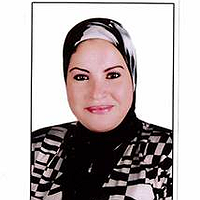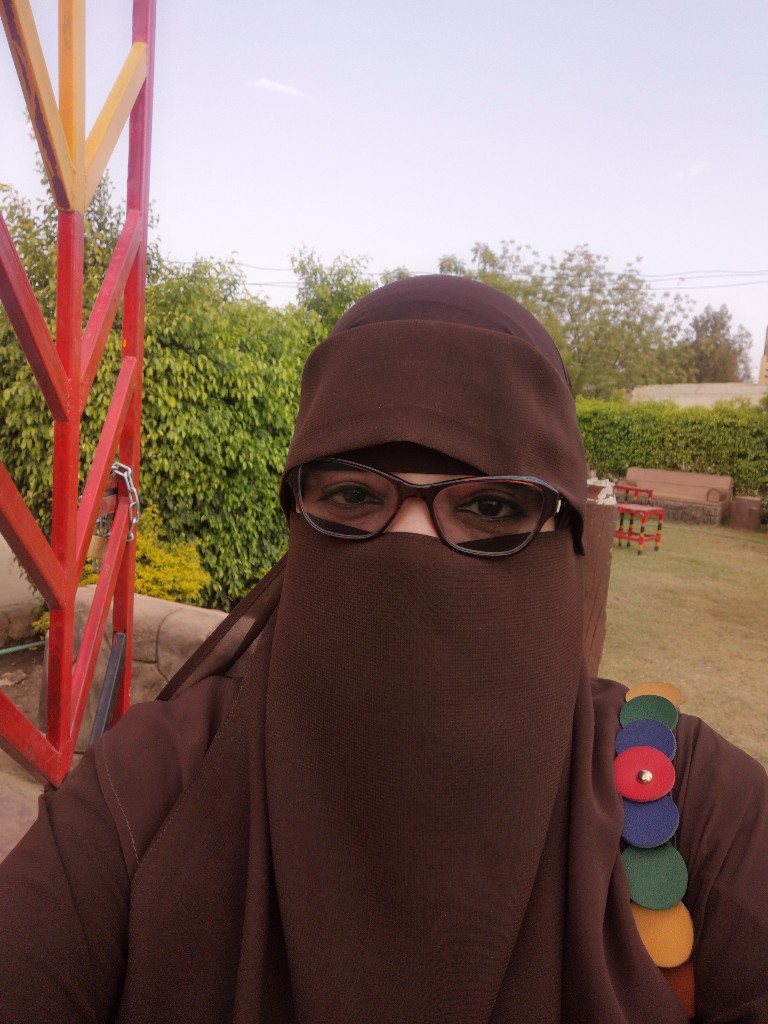Scientific Program
Keynote Session:
Title: Different insertion techniques of subclavian central lines, driven by POCUS
Biography:
Philipp Willingshofer has received his medical doctorate from the Medical Univesity in Graz in 2008. After having had worked in the Emergency Departement in Washington D.C., USA, he did his residency in Anaesthesia and Critical Care in Austria. During this time he was granted the “Trainee Exchange Programme” award of the European society of Anaesthesiology and was therefore able to do an internship in cardiac anaesthsia at the Royal Papworth Hospital in Cambridge, UK. He finished his residency in 2015 and received the European Diploma in Anaesthesia and Critical Care (EDAIC) and the European Diploma in Intensive Care Medicine (EDIC) in 2016 and 2019. He is therefore certified by the European Society of Anaesthesiology (ESA) and the European Society of Intensive Care Medicine (ESICM). He is finishing a postgraduate University Programme in Medical Law in July 2020. He is currently working at the Kepler University Clinic in Linz and as a prehospital Emergency Physician in Austria and his special interests are Intensive Care Medicine, Cardiac Anaesthesia, Emergency Medicine and the use of ultrasound in those fields.
Abstract:
The insertion technique of subclavian central lines has seen some variations since it`s early description. Many of these changes resulted from the increasingly popular use of POCUS (point of care ultrasound). My talk, at the 2020 International Conference on Critical Care and Emergency Medicine in Dubai, aims to give an overview over the different methods of subclavian central line insertion. It will cover the variations when using landmark based techniques, as well as ultrasound guided supraclavicular and infraclavicular approaches and the ultrasound based “PART” technique. It will conclude with an ultrasound-only way to confirm the correct position of central lines.
Title: Saudi nursing students attitudes towards patient safety and the influencing factors: A quantitative and qualitative study at the college of nursing-Jeddah
Biography:
Ebtsam Aly Abou Hashish has completed her PhD in the Faculty of Nursing at Alexandria University, Egypt. She is an Assistant Professor of Nursing Management and Leadership in College of Nursing at King Saud bin Abdul-Aziz University for Health Sciences, Jeddah, KSA, and an Assistant Professor of Nursing Administration in the Faculty of Nursing at Alexandria University, Egypt. She teaches many management and ethics courses for undergraduates and post graduates and as well as participated in supervising many theses and dissertations as an academic supervisor. She also acts as an Associated Trainer in the Faculty and Leadership Development Center (FLDC). She has published more than 15 papers in reputed journals and has been serving as an Editorial Board Member and Reviewer of reputed journals.
Abstract:
Title: Learning to learn: An exploration of the experience of overseas nurses undertaking higher education in the United Kingdom (UK)
Biography:
Michelle currently works a City, University of London as the Programme Director: Mentorship : Supporting & Assessing Learning in Practice Settings and Practice Lead for Adult nursing students. Michelle has previously worked as a Senior Lecturer at Buckinghamshire New University and Kingston University & St Georges University, London. This followed a successful nursing career as a District Nursing Sister and as an Intermediate Care Nurse. Michelle has taught a range of subjects latterly with a focus on Public Health, Culture & Diversity in Healthcare, Professional Nursing and Management of Long term conditions.Michelle has a MSc in Medical Anthropology and has a keen interest in culture, expressions of illness and how nurses cope with this. Michelle is currently in the final phase of her PhD exploring the experiences of Indian nurses coming to the UK to study and work.Michelle has an MSc Medical Anthropology; BSc Community Nursing (District Nurse); PGCE; Nurse Prescriber; Diploma In Nursing (Adult); BA (Hons) Business Studies.
Abstract:
Title: How could technologies help to improve care and enhance nursing joy?
Biography:
Abstract:
Title: The perceived and unmet needs of adult family members of patients in PACU
Biography:
Hana Kadhom has 35 years experience in nursing as a practitioner and educator. Her experience has been across the Middle East and UK. She obtained her PhD from the University of Hull (UK) in 1989 and she has completed her advanced postgraduate diplomas from British Universities in Nursing Education and Health and Safety. She is a former Senior lecturer and Director of Nursing Degree Bridging programme (RCSI) University of Royal College of Surgeon Bahrain and Saudi Aramco.
Abstract:
Title: Laparoscopic surgery; The current scenario
Biography:
Mushtaq Chalkoo is Working as Additional/associate professor at GMC Srinagar from 22 Oct,2017 Working as Assistant Professor Surgery at GMC, Srinagar from 2012- oct 2017 Worked as Permanent Lecturer Surgery at GMC, Srinagar from 2009 2012 Worked as Adhoc Lecturer Surgery at GMC, Srinagar from 2007 2009 Worked as Assistant Surgeon at SDH, Tangmarg from 2003,2007 Worked as Resident Surgeon at KSA from 2001 “ 2003 Worked as Senior Resident Surgery & Allied Specialties at SKIMS from 1997" 2001 Postgraduate Surgery, SKIMS from 1994, 1997 House Surgeon from 1993, 1994 Internship in GMC, Srinagar from 1992,1993.
Abstract:
Title: Nursing and mental health in liberia
Biography:
Gail Stuart is dean and a tenured Distinguished University Professor in the College of Nursing and a professor in the College of Medicine in the Department of Psychiatry and Behavioral Sciences at the Medical University of South Carolina. She has been at MUSC since 1985 and has served as Dean of the College of Nursing since 2002. Prior to her appointment as Dean, she was the director of Doctoral Studies and coordinator of the Psychiatric-Mental Health Nursing Graduate Program in the College of Nursing. She was also the Associate Director of the Center for Health Care Research at MUSC and the administrator and Chief Executive Officer of the Institute of Psychiatry at the Medical University where she was responsible for all clinical, fiscal, and human operations across the continuum of psychiatric care. She received her Bachelor of Science degree in nursing from Georgetown University, her Master of Science degree in psychiatric nursing from the University of Maryland, and her doctorate in behavioral sciences from Johns Hopkins University, School of Hygiene and Public Health. Dr. Stuart has taught in undergraduate, graduate, and doctoral programs in nursing. She serves on numerous academic, corporate, and government boards and represents nursing on a variety of National Institute of Health policy and research panels, currently serving as President of the Board of Directors of the Annapolis Coalition of the Behavioral Health Workforce. Dr. Stuart also was a Visiting Professor at Kings College, Instuitute of Psychiatry in London England. She is a prolific writer and has published numerous articles, chapters, textbooks, and media productions. Most notable among these is her textbook, Principles and Practice of Psychiatric Nursing, now in its 10th edition, which has been honored with four Book of the Year Awards from the American Journal of Nursing and has been translated into 5 languages. She has received many awards, including the American Nurses Association Distinguished Contribution to Psychiatric Nursing Award, the Psychiatric Nurse of the Year Award from the American Psychiatric Nurses Association, and the Hildegard
Abstract:
Title: Changes in sexual behaviors due to the utilization of PrEP as a preventive method for the transmission of HIV
Biography:
Michael Kaltenbach is a part-time lecturer at Rutgers University School of Social Work, teaching a course in Human Behavior in the Social Environment. He has previously taught BSW and MSW level courses in crisis intervention and brief therapy, clinical practice, intro. to social welfare / human services, communication in social work practice, human behavior and the social environment, and emotional disorders in childhood and adolescents at Temple University and the University of Southern California. Kaltenbach has been working in the field of psychology and social work for the past twenty-three years, and eighteen of those years have been since he received his master’s degree in Social Work. His doctoral dissertation research interest focused on how sexual behaviors have changed due to the usage of PrEP, as a HIV preventive method. His research data as interpreted through the theoretical / conceptual perspectives of cognitive-behavioral theory and relational-cultural therapy. Kaltenbach is a Licensed Clinical Social Worker in California, New York, and Pennsylvania, and has many years of experience providing psychotherapy, case management, and other social services in a variety of settings: hospitals, HIV outpatient clinics, schools, foster care agencies, group homes, etc. He has experience providing Clinical Supervision as well as Field Instruction to MSW level Social Workers and Interns from USC and UCLA. He formerly served as a Co-Facilitator for the LA County HIV Mental Health Task Force and has provided lectures on various mental health topics. Previously, he was a Teacher’s Assistant (T.A.) for a professor at the University of Pennsylvania School of Social Policy & Practice’s MSW level course on Post-colonial Social Work Practice: International Social Welfare in Kolkata, India. He enjoys traveling and learning about various cultures. After he obtained his bachelor’s degree he served as an US Peace Corps Volunteer in Senegal, West Africa. When Kaltenbach is not teaching, he currently provides psychotherapy in his private practice office located in Philadelphia, PA. He also provides psychotherapy on a fee-for-service basis at outpatient community counseling centers in West and South Philadelphia, and at a Senior Assisted Living Facilities in Bay Ridge, Brooklyn, NYC and Manhattan, NYC.
Abstract:
According to the Joint United Nations Programme on HIV/AIDS (UNAIDS) and the World Health Organization (WHO), approximately 33.4 million individuals throughout the world have been affected by HIV/AIDS in the last 30 years or so (Bonacquisti & Geller, 2013). The medication, Truvada, otherwise known as PrEP has been introduced to serve as a harm reduction technique to combat the spread of HIV infection. PrEP is an antiretroviral drug that lowers the risk of HIV exposure. This is a qualitative study examining the sexual behaviors of gay and bisexual men prescribed PrEP as a preventive method for the transmission of HIV. I conducted 30 semi-structured in-depth interviews of people who had been prescribed PrEP for at least 30 days in three cities: Los Angeles, Philadelphia, and New York City. The results indicate that contextual factors shaped the sexual behaviors of participants on PrEP, leading them to lower risk at times, and elevate it at others. PrEP caused individuals to experience changes within their communication patterns with their medical providers and their sexual partners. The results shed light on the way people on PrEP engage in sexual and health-seeking behaviors and help to develop a blueprint for the way service providers engage with this community.
Title: Screening for violence in the home: mHealth Technology Versus Paper?
Biography:
Phyllis Sharps, PhD, RN, FAAN, Elsie M. Lawler Endowed Chair, Professor of Nursing and Associate Dean for Community Programs and Initiatives, at the Johns Hopkins University School of Nursing. She is internationally known for her research, leadership of interdisciplinary research teams and her advocacy for violence against pregnant and parenting women. She has published more than 90 articles on reducing violence among African American women, specifically, the physical and mental health consequences of violence against pregnant and parenting women, infants, and very young children. She has been the principal investigator for 2 NIH funded grants, totaling more than $8M.
Abstract:
Globally, the prevalence of intimate partner violence (IPV) during pregnancy ranges from 4%-29%. Screening and identifying abused pregnant women continues to be a challenge, especially for home visiting programs. Computer-assisted technology has been effective for screening sensitive issues such as depression and substance use. The purpose of this presentation is to describe the effectiveness of two different methods (paper-pencil vs. computer-assisted) for screening for IPV in perinatal home visit programs Pregnant women (N=416) participating in the “Perinatal Home Visiting Program Enhanced with mHealth Technologyâ€, (1 R01 HD 071771 NICHD/NIH) in urban, suburban and rural settings were randomized to either traditional paper-pencil IPV screening or IPV screening on hand-held tablets. Screening data were examined for IPV prevalence rates comparing paper-pencil vs. tablet. Variables included settings and ethnic/racial background. The prevalence rates were similar using paper was 21.8% versus 24.5% using tablets (p=.507). Although there were no significant differences between paper versus tablet the prevalence rates were higher using tablets (Urban –paper=15.6% vs. tablet=16.3%, p=.881; Suburban paper=30.6% vs. tablet=34.5%, p=.634; Rural-paper=22.9% vs. tablet=31.7%, p=0.390). Prevalence rates were not significantly different between the two screening methods; however paper screening had a slightly higher prevalence (Af. Am.–paper=28.8% vs. tablet=24.5 % -p=0.62q; Euro Am - paper=20.7% vs. tablet=20.0%, p=.895). This study’s result provides evidence that women will reveal their abuse status regardless how asked or strategies used to screen for IPV. The important strategy is having protocols and training that prepare health care providers to screen for IPV. Health care providers in all settings that provide care to women should screen and then connect women to resources in order to improve pregnancy outcomes.
Title: Investigation of brain activity during type II communication of the elderly by near infrared spectroscopy
Biography:
She has engaged in education and research on deontological nursing and home care nursing. Her research themes are the desirable communication between the elderly and the care staff and the effective way of support for the elderly ADL independence. In particular, her research on the elderly communication is garnering attention around the world. Her article (Fukaya ,et al .2016)Â will be published as a chapter in eBook "Top 10 Contributions on Nursing & Health Care".
Abstract:
In our previous studies, we clarified that there were two types of linguistic communication between elderly people in need of long-term care and care providers: Type I communication: Task oriented communication and Type II communication: Life worldly communication. In geriatric care facilities, the average speech duration per day was 4 minutes, which was extremely short. It was caused by the fact that about 75% of the conversation was occupied by type I communication and the speech of the elderly was restricted. On the other hand, type II communication was proved to increase the elderly speech duration. It was also proved that the lack of type II communication not only affected the quality of life of the elderly but also may affect the deterioration of the mental activity and the occurrence of dementia of the elderly. However, it has not been clarified how these types of communication affect the brain activity. Therefore, this study is aimed to measure the brain activity during type I and type II communication by Near Infrared Spectroscopy (NIRS) and to analyze the difference between them. The subjects were 25 elderly people aged 65 years or older who did not suffer from dementia. The 16 channels of NIRS system (NIRO200NX, Hamamatsu Photonics K.K., Japan) were applied for each participant. We conducted communication with the elderly using communication guides of each types. Changes in the concentrations of oxygenated hemoglobin (oxy HB), deoxygenated hemoglobin (deoxy HB) and total hemoglobin(total HB) were measured using NIRS to observe the brain activity during the communication. The video recording was also performed with NIRS.
Keynote Session:
Title: DVT in Pregnancy; an underestimated calamity!
Biography:
Otmar RM Wikkeling, MD, MBA, CMIO is a vascular surgeon with a special interest in lymphedema and deep venous diseases. As one of the founding fathers of one of the four specialized centers in this pathology in the Netherlands, this subject is very dear to him and his other specialty is data-driven care.
Abstract:
Title: Current concepts on the role of Pelvic Binders in Emergency Trauma Care: A retrospective review of the literature
Biography:
Christos Konstantinidis was born in Greece. He graduated from the Medical School of Thessaloniki. He holds an MSc in Global Health and Disaster Medicine from the Medical School of Athens. After obtaining his Specialty he continued his training in Derriford Hospital, UK. Since 2016 he works as a Consultant Surgeon in Orthopedics and Trauma in the General Hospital of Ioannina, Greece. This Hospital serves as a Major Trauma Center for the Northwest of the country. During his years there, he has dealt in the Emergency Department and Surgical Theater with numerous occasions of skeletal and polytrauma patients, together with his elective orthopedic list.
Abstract:
Introduction: Pelvic fractures as derived by high energy trauma are uncommon, accounting for 3-8% of all skeletal injuries. In polytrauma patients, this percentage may reach up to 25% with a mortality rate of 7-47%. Many authors suggest that the primary stabilization of such a type of injury by means of an external pelvic binder may be beneficial in patient's initial resuscitation. There is controversy about their actual usefulness while potential side effects, such as overrotation of hemipelvis, false radiographic results and pressure wounds remain a subject of discussion. Purpose: The purpose of this study was to conduct a systematic review of the literature in search for evidence concerning the safety and effectiveness of pelvic binders in pre-hospital care. Methodology & Strategy: More than 40 original studies between 2000 and 2020 including randomized trials, cohort studies, case reports and retrospective reviews were examined and analyzed, with special attention and significance given towards our initial questions. Papers were assessed using the ''Preferred Reporting Items for Systematic Reviews & Meta- Analyses - PRISMA'' methodology. Control list included papers with critical comments and results, level of evidence, duration, case numbers and clinically applicable outcomes. Findings: All studies in this review revealed a level of combined methodology deficiency. No clear evidence that pelvic binders were as effective as supposed to be in primary patient management was found. Conclusion: Due to ease in use, relatively low cost and side effect potential, emergency care providers are advised to use these systems. However, further studies conducted in the field and Emergency Department are needed to support strong recommendation in a priori implementation of pelvic binders in patients with suspected pelvic injury.
Title: The Specialized Approach of Nurses in Different Urgency / Emergency Contexts
Biography:
Lidia Marques Bernardo is taking a specialty and Integrated master's degree in Community Nursing and Public Health from University of Evora. Previous she has completed a Specialization Course in Medical-Surgical Nursing; Educator Course - Program for Continuous Improvement of Nursing Care Quality Standard and a Post-Graduation in ''Operating Room Nursing''. She is a team leader of nurses in the Hospital of Lagos, urgency sector. She has taken various number of courses, not only for nursing but also has a fireman. She has given several short courses for professionals as an educator.
Abstract:
The evolution of Nursing demonstrates and emphasizes the path of acquisition and development of specialized skills to approach the person in critical situations. For a qualified approach to a critically ill patient, it is necessary for nurses to have scientific, ethical, relational, and technical skills, in order to operationalize the areas of care, management, training and research. These are acquired through specializations, continuous training (curses), both theoretical and technical scientific, and simulations. The approach of nurses in an emergency can happen in an extra hospital context, for example an Immediate Life Support Ambulance (SIV), Rapid Emergency Medical Vehicle (VMER) and 112. In a hospital environment, in addition to the urgency department, critical situations can even happen in inpatient services, for this purpose a specific in-hospital team was created to attend immediately (Internal Medical Emergency Team (EEMI). These nurses are endowed with specific expertise and skills in order to achieve excellence in the quality of care provided, promoting a positive and favorable prognosis for the patient. This excellent performance on the part of nurses is due not only to the skills inherent to specialization, but also to the specificity of the circumstances that require the capacity for reflection and decision-making, as well as following the appropriate protocols for each situation. Aware of the importance of a practice based on evidence, reflection, and personal investment, today we have a nursing team capable of responding to the complexity and demand for quality care in emergency.
Title: Surveillance of Hospital Acquired Infection at Post-operative ICU/ Al-Shaab Teaching Hospital, Khartoum State, Sudan
Biography:
Abstract:
Purpose:
Purpose of this study is to: evaluate ICU structure at Al-shaab Teaching Hospital, assess IPC practices, and measure the magnitude of device-related infections by measuring overall infection rate, UTI rate, BSI rate and VAP rate.
Methods:
A cross-sectional descriptive hospital based study; baseline information was collected by observation using specific checklist, patient health records, and ICU staff interview.
Findings:
Areas to be improved; Manpower: 10 nurses/ morning shift+ 5 nurses/ evening shift, 1 nurse:1 patient. Environment: ICU room designed for 6 beds, sometimes number of patients exceeds 8. Only 1 shallow hand wash station with non-steel sink, it’s running not warm water, no antiseptic only plain soap. No ventilation system. Distances between beds are not fixed. There is unclean dark blue partition between beds. They clean floor by chlorine twice a day using heavy gloves. General waste not segregated; there is one large porous basket and 1 full sharp-box. Methods: No available Written IPC policies and procedures documents. No detailed patient registers. Equipment: Three refrigerators; for drugs, blood and food. First two are clean but the 3rd one is not. Materials: ICU nurses didn’t follow instruction of inserting Intravascular catheters; they follow instructions of inserting Urinary catheters.
Total bed days and device days:
| Total Bed days | Total Urinary Catheter days | Total Ventilator days | Total Central Line days |
| 166 | 46 | 3 | 26 |
| No. | Infection | Frequency |
| | Overall Infection Rate | 12/1000bed days |
| | UTI Rate | 0/1000Catheter days |
| | BSI Rate | 6/1000Central Catheter days |
| | VAP Rate | 0/1000Ventilator days |
| | SSI Rate | 3.8% |
Conclusion and Recommendations:
No written policies, practice procedures. Staff not trained on IPC. Medications not available on demand. Recommendations include: gaining administrative support to assure resources allocation, planning for educational programs at time of recruitment and in-service, improving work environment, ensuring medical supply and maintaining availability and regular equipment checkup, creating regular surveillance system to detect HAI.
Title: Myroides spp related sepsis and ICU admission - Literature Review and Case Report
Biography:
Mara Tantau is an anesthesia and intensive care trainee, a Ph.D. student with an interest in regional anesthesia and pain medicine. Besides researching her domain of interest, other activities include giving intensive care and anesthesia-related lectures to students and fellow residents.
Abstract:
Myroides species is an emerging source of infection and subsequent sepsis that often develops multidrug and even extensively drug resistance showing non-susceptibility to usual empiric antibiotics.
These gram-negative bacilli are ubiquitous bacteria that are recognized as opportunistic human pathogens, usually being found in water and soil.
This is a case report of an Extensively drug-resistant Myroides spp that was isolated from the urine sample of an oncology patient who presented to the hospital with urosepsis and acute urinary retention. The case report is followed by a review of the literature regarding sepsis and septic shock, Myroides spp-related, in patients subsequently admitted in the ICU.
Even though there are reports of severe infections in immunocompetent patients, most often it occurs in immunocompromised patients, and this case study is a novelty because it particularly deals with Myroides spp infection in a cancer patient.
In conclusion, this case along with others reported in the literature should raise awareness about the possibility of infection with this particular bacillus because in recent years it appears to be the cause of emerging and often severe infections.
Of importance is the antimicrobial resistance profiles of Myroides spp, as this organism is most often being classified as multidrug-resistant and even extensively drug-resistant.
This report on infections with Myroides has an important significance for ICU professionals dealing with severe infections not because it remains a rarity as a source of sepsis and thus not studied at large but because of its low antibiotic susceptibility profile.
Title: Cardiovascular implications for COVID-19 in pregnancy
Biography:
Shamsa Mohammed completed 5 years residency program and fellowship in maternal-fetal medicine from the University of Manitoba Canada in 2011.
She is working as a senior consultant at OBGYNE department, Royal hospital, Oman. She has a special interest in cardiac disease during pregnancy and managed to establish a joint Obstetric /cardiology joint clinic in her department .
She is also a member of the scientific committee for Omani
residency program and chairperson of simulation subcommittee.
Abstract:
Severe acute respiratory syndrome coronavirus is the new coronavirus responsible for the coronavirus disease 2019 pandemic, characterized by acute respiratory distress syndrome and atypical pneumonia. In nonpregnant women, studies have shown that severe acute respiratory syndrome coronavirus causes cardiac injury, which can result in myocardial inflammation and damage. Despite many studies investigating the extent of cardiac compromise in patients with severe coronavirus disease 2019, little is known regarding its impact on pregnant women. A high index of suspicion for both COVID-19 and cardiovascular complications is critical for the optimal maternal-fetal outcome.
We summarise current evidence related to cardiovascular implications for COVID-19 in pregnancy.

















